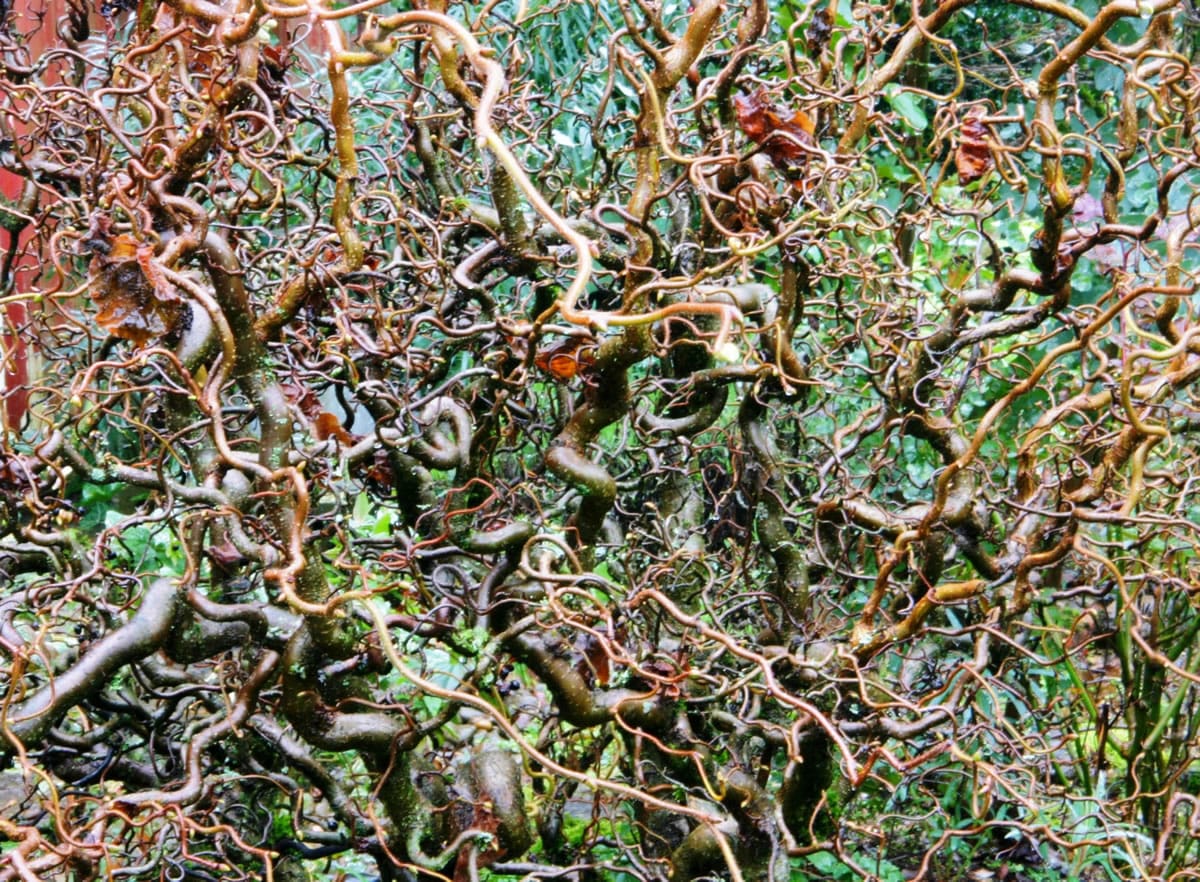When it comes to choosing plants for the winter garden, nothing lends texture, volume and visual depth to a planting design than evergreens. Winter is the time of year to evaluate the garden and decide if and where an evergreen can add interest to the season. Conifers are cone-bearing trees and shrubs including pine, fir and spruce. Rhododendron and winter-hardy cotoneaster are classic Northwest evergreen shrubs and make good all-season groundcovers for large garden spaces. Multiple evergreen trees form excellent living walls and backdrops for a large garden.
Evergreen shrubs raise our eyes to the horizon, helping us see the connection between earth and sky. Large shrubs bring the home into scale with our gardens. Bold sweeps of evergreen groundcover plants such as dwarf juniper, pachysandra and Vinca minor threading through beds and borders are important in unifying the winter garden. Keep in mind that the term evergreen describes a plant that holds its leaves throughout the year. This includes plants with broad leaf foliage or needles in shades of green, blue, gold and yellow.
Since I often advocate choosing certain plants for their winter silhouette, it makes sense to remove any
branches, limbs or debris that detracts from the architecture of the plant. The Kilmarnock willow (Salix caprea “Kilmarnock”) is a small, weeping form of willow with a multitude of distinctly arching branches. Because of its intricate branch structure, dead leaves and dried stems often catch in the branches before reaching the ground. Remove such garden debris from this and other specimen plants so the inherent structure of the plant becomes the key feature.
The Stewartia is another tree with a unique pattern of branching. As the tree matures the branches continuously grow away from each new leaf bud. This gives each branch an interesting zig-zag pattern. In the middle of a bare winter landscape the effect is one of graceful undulation. Occasionally, the seed pods left after summer flowering will hold on through winter. You can improve the overall look of the tree in late winter if you remove any seed pods that have become moldy or deformed from winter rains.
Include other deciduous shrubs with unique growth patterns to enhance your winter garden. The “Shasta” viburnum is distinctly horizontal with branches that grow off the main stem in a neatly divided order. This pattern carries over into spring with tiers of branches covered in clear white flower blossoms. For a mass of interesting twists and turns plant the contorted filbert, also called Harry Lauder’s Walking Stick (Corylus avellana “Contorta”). The winter-blooming witch hazel (Hamamelis mollis and intermedia) grow up and out from a central trunk creating a well-defined, vaselike silhouette.
Pruning roses
Years ago, I took the advice of an article I read that put “proper rose pruning” to the test. It recommended we do the first seasonal pruning of any shrub roses with a pair of hedge trimmers. Rather than pruning every individual branch, you simply use long-handled shears to cut the plant down to about 21/2feet and you are finished. The report confirmed that there was no discernible difference between this method of pruning and choosing to cut specific branches at the proper point with a pair of rose pruners. This is especially useful if you have an assortment of hedge or landscape roses.
I have had great success with this method on the low-growing landscape shrub rose, “Flower Carpet.” Groundcover roses have a low-growth habit and are known for their low maintenance. They are ideal for mass planting and require very little care. With 20 of these roses planted along the side of the barn, it’s a great stress reducer knowing I don’t have to do my job perfectly for the plant to do its job. Shearing the longest branches later in the growing season keeps these plants covered with masses of rose-pink rosettes from April to October.
Tongue twister
The first plant I absolutely had to have in my garden was Ampelopsis brevipedunculata “Elegans.” The common names for this climbing vine are Blueberry climber and Variegated Porcelain vine. It’s no surprise to me that I wanted it mostly for its name. With this plant I could combine my love for words with my growing love for plants. If you say the name phonetically, it trips along lightly on the tongue. Seriously, give it a try; it’s a guaranteed delight to any specialty plant loving gardener. The vine features foliage similar to grape leaves splashed with green and white highlights and showy clusters of brilliant porcelain blue berries. You’ll need a sturdy trellis to hold up this tongue twister.
Robb Rosser is a WSU-certified master gardener. Reach him at Write2Robb@aol.com.



